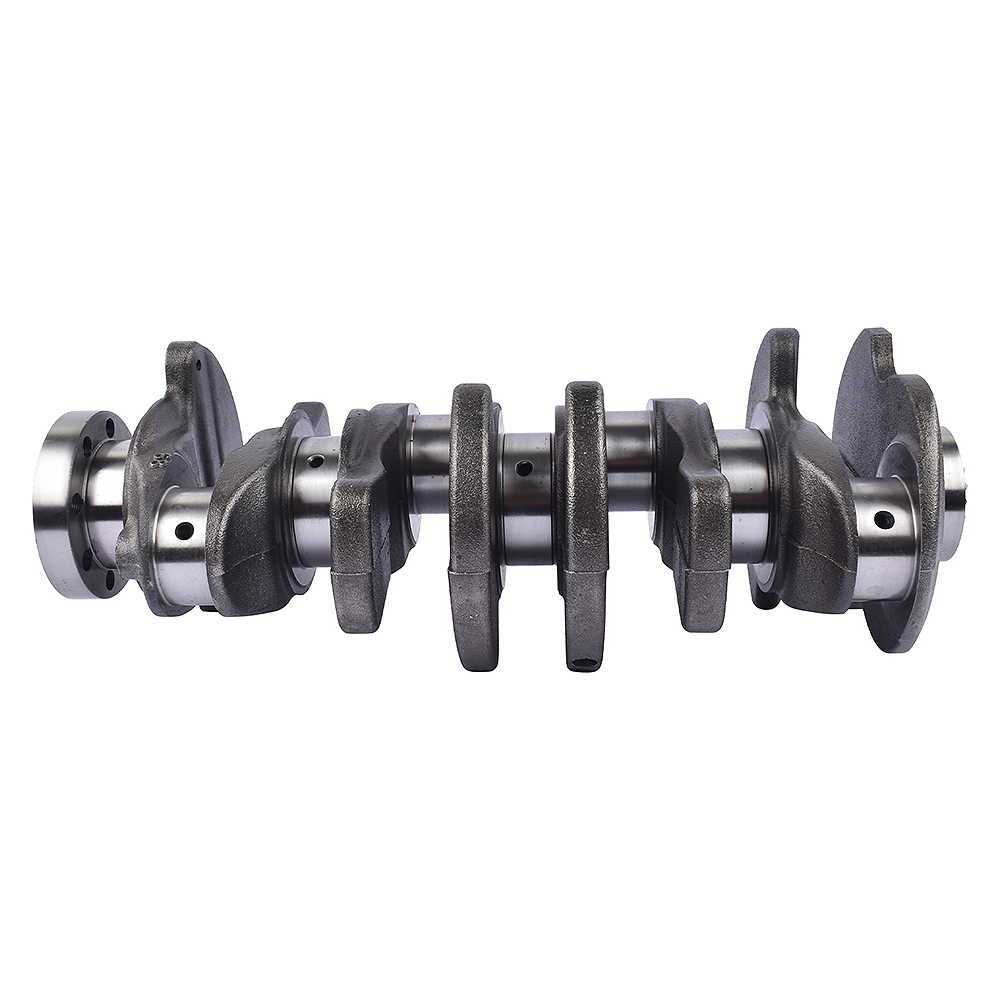The Heart of the Engine: A Deep Dive into the Crankshaft
Within the roar of a car engine lies an unassuming yet vital metal component: the crankshaft. Like the heart of the engine, it undertakes the critical role of transforming the reciprocating motion of pistons into rotational force, driving the vehicle forward. Let's delve deep into the intricacies of the crankshaft, exploring its structure, materials, manufacturing processes, and its significant impact on automotive performance.
1. Structure and Working Principle: A Marvel of Mechanical Conversion
The crankshaft is no simple metal rod; its ingenious design facilitates a complex mechanical conversion. Typically composed of crankpins, main journals, and crank webs, the crankshaft undergoes intricate machining processes to achieve its distinctive "L" shape.
Crankpins: Serving as the bridge between the piston and the main journal, the crankpins are responsible for converting the linear motion of the piston into rotational motion. As the piston moves up and down within the cylinder, the connecting rod attached to it forces the crankpin to rotate around the main journal, effectively transferring and transforming the force.
Main Journals: These act as the rotational axis for the entire crankshaft, supporting its spinning motion and transferring the rotational force to other engine components such as the flywheel and timing gears, ultimately propelling the vehicle.
Crank Webs: Located on either side of the crankpin, these connect to the connecting rod, transferring the piston's motion to the crankpin. They are an essential link in the power transmission process.
The operation of a crankshaft is akin to a precise mechanical dance. As the engine ignites, the high-temperature, high-pressure gases produced from combustion drive the piston downward. This downward motion, through the connecting rod, forces the crankpin to rotate. The crankpin's rotation, in turn, spins the main journal, transferring the rotational force to other components, and ultimately driving the vehicle. This seamless chain of motion converts the chemical energy stored in fuel into mechanical energy, providing the driving force for the car.
2. Materials and Manufacturing: Forging Strength and Precision
The crankshaft operates in a demanding environment, subjected to immense centrifugal, bending, and frictional forces. Therefore, the materials and manufacturing processes used are paramount to its performance and longevity.
Materials: High strength, toughness, and wear resistance are paramount when selecting crankshaft materials. High-strength alloy steels or forged steels, such as 4340 steel and 4140 steel, are commonly used for manufacturing high-quality crankshafts. These materials undergo specialized smelting processes and incorporate alloying elements like chromium, molybdenum, and vanadium to enhance their strength, toughness, and wear resistance, enabling them to withstand the rigors of high temperatures, pressures, and rotational speeds.
Manufacturing: Precise machining processes are crucial for guaranteeing the crankshaft's performance. The manufacturing process encompasses forging, heat treatment, machining, and surface treatment. Each step plays a vital role: heat treatment enhances the crankshaft's strength and toughness, machining ensures precise dimensions and surface finish, and surface treatments enhance wear resistance and corrosion resistance.
Furthermore, meticulous dynamic balancing tests are performed on the crankshaft. By adding or removing minuscule amounts of metal, the crankshaft's center of gravity is aligned with its rotational axis, minimizing vibrations and noise at high speeds, and ensuring smooth and comfortable engine operation.
3. Significance of the Crankshaft: The Engine's Beating Heart
As one of the most critical components in an engine, the crankshaft directly influences the engine's power output, efficiency, reliability, and durability.
Power Output: The crankshaft serves as the output shaft for the engine's power. Its strength and rigidity directly impact the engine's maximum torque and power output.
Engine Efficiency: The crankshaft's balance and surface finish affect the engine's mechanical efficiency. A well-balanced crankshaft minimizes friction losses, improving engine efficiency and reducing fuel consumption.
Reliability and Durability: A high-quality crankshaft can withstand greater loads and stresses, making it less susceptible to fractures or deformations. This extends the engine's lifespan and reduces maintenance costs.
4. The Future of the Crankshaft: Driven by Innovation
With the ever-increasing demands on engine performance, crankshaft technology continues to evolve. New materials, advanced manufacturing processes, and innovative designs are shaping the future of this critical component.
Lightweight Designs: The use of lightweight materials and optimized designs can reduce the crankshaft's weight, reducing the engine's inertia and improving responsiveness and fuel efficiency.
High-Strength Materials: Advancements in material science are leading to the use of even stronger alloy steels and materials like ceramics in crankshaft manufacturing, further enhancing strength and durability.
Advanced Manufacturing Technologies: 3D printing, laser cladding, and other cutting-edge manufacturing techniques are poised to revolutionize crankshaft production. These technologies offer increased precision, improved efficiency, and the potential for customized designs to meet the future's demanding engine performance requirements.
The crankshaft, as the heart of the engine, plays an undeniably crucial role. With continuous advancements in technology, crankshaft design and manufacturing will continue to evolve, powering automobiles with stronger, more efficient, and more reliable engines, driving the automotive industry towards a promising future.

 The Relationship Between Crank
The Relationship Between Crank
 Crankshaft Failure Prevention:
Crankshaft Failure Prevention:
 Understanding the Different Ty
Understanding the Different Ty
 The Role of Crankshafts in Ele
The Role of Crankshafts in Ele
